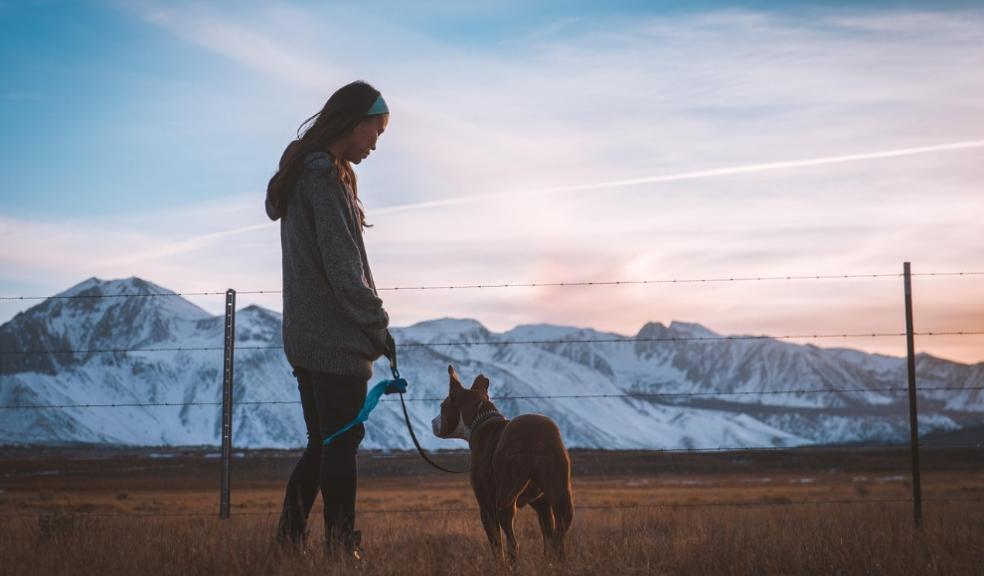
How Much Exercise Does a Dog Need? A Complete Guide for Every Age and Breed
Why Exercise Is So Important for Dogs
Regular exercise does far more than just help your dog burn off energy. It’s one of the most beneficial things you can do for their overall health and happiness. Just like with humans, dogs benefit physically, mentally, and emotionally from daily movement and stimulation.
Physical exercise helps dogs maintain a healthy weight, strengthen muscles, support joint health, and improve heart and lung function. It also aids digestion and can help prevent urinary issues by encouraging regular bathroom breaks. Overall, dogs who exercise regularly tend to live longer, healthier lives.
Exercise provides important mental benefits as well. A well-exercised dog is generally calmer, less anxious, and less likely to develop destructive habits. Regular activity helps regulate mood, promotes better sleep, and reduces stress-related behavior problems.
Sniffing plays a huge part in this, too. Allowing your pup to stop and sniff engages their brain in a deeply satisfying way. Studies show that sniffing raises a dog’s heart rate, activates their brain’s reward centers, and can be as mentally tiring as vigorous physical exercise. Many trainers note that a short, sniff-filled walk can leave a dog just as relaxed as a much longer one without it.
How Much Exercise Does a Dog Need?
Unfortunately, there isn’t a one-size-fits-all answer to how much exercise a dog needs. Generally speaking though, most dogs require between 30 minutes and 2 hours of physical activity and mental stimulation each day. The exact amount will depend on factors such as age, breed, size, and overall health.
Puppies
Puppies have tons of energy, but their growing bodies can’t handle long or strenuous activity yet. Instead, they need short, frequent play sessions throughout the day. A simple rule of thumb is about five minutes of exercise per month of age, up to twice a day. So, a four-month-old puppy should get about 20 minutes of activity in the morning and again later in the day.
The best form of “exercise” for puppies is safe play, socialization, and exploration. Short walks, gentle fetch games, and exposure to new sounds, textures, and environments help them build confidence and coordination without overdoing it.
Adult Dogs
Once your dog reaches adulthood, the amount of exercise needed depends largely on breed and lifestyle.
- High-energy breeds like Border Collies, Australian Shepherds, Labrador Retrievers, German Shepherds, Airedale Terriers, Siberian Huskies, and Belgian Malinois often need 1–2 hours or more of activity every day.
- Moderate-energy breeds such as Cocker Spaniels, Boxers, Beagles, Standard Poodles, Golden Retrievers, Dalmatians, and Staffordshire Bull Terriers typically do well with 30–60 minutes of daily activity.
- Low-energy breeds including Bulldogs, Basset Hounds, Shih Tzus, Pugs, Cavalier King Charles Spaniels, Great Danes, and many toy breeds still need daily movement, but shorter, more relaxed sessions are usually enough.
In addition to physical activity, mental enrichment remains just as important as when they were a puppy. Even a calm walk where your dog can sniff, explore, and process the world around them provides valuable mental exercise.
Senior Dogs
While older dogs naturally slow down with age, they still benefit from regular movement to stay physically and mentally healthy. Gentle activity helps maintain joint flexibility, muscle tone, and circulation, while also keeping their mind sharp.
Low-impact options like leisurely walks, swimming, or light indoor games are ideal for keeping seniors active without strain. Just be sure to watch for signs of fatigue or discomfort, such as heavy panting, lagging behind, or soreness, and adjust the routine as needed.
Different Ways to Exercise Your Dog
There are numerous ways to keep your dog active, and the best routines combine both physical and mental exercise. Variety not only helps prevent boredom-related behavior issues but also strengthens the bond between you and your pup.
Outdoor Activities
For most dogs, walks are the foundation of a daily exercise routine. They not only provide physical activity but also a chance to sniff and explore, which is mentally enriching all on its own. An easy way to make walks more stimulating is by regularly mixing up your routes.
Other great outdoor activities include running, jogging, or even structured sports like agility, rally, or flyball. If your dog loves adventure, try exploring a new park or taking them along on your next hike. Just be mindful of toxic plants along the trail that can make dogs sick if licked or ingested.
Swimming is another great option and can be especially beneficial for dogs with joint issues, since it’s a low-impact, full-body workout.
Play-Based Exercise
Playtime is one of the easiest ways to make exercise fun. Fetch, tug-of-war, and chase games all allow your dog to burn off energy while strengthening your connection. Rotate toys regularly to keep things fresh, and always make sure play is safe for your dog’s age and size.
Mental Enrichment
Mental exercise is just as important as physical movement. Dogs love to use their noses and brains, so try food puzzles, snuffle mats, hide-and-seek with treats, or scent-based games where your dog searches for hidden items. Even a short training session practicing obedience cues or teaching a new trick can provide powerful mental stimulation.
Additionally, when using treats as rewards, always stick to dog-safe options and avoid anything on the list of toxic foods that could make your dog sick.
Indoor Activities
When the weather isn’t cooperating, there are still plenty of ways to keep your dog active indoors. Tug games, hide-and-seek, hallway fetch, or short stair climbs (if appropriate for your dog’s breed and joints) can all do the trick. You can also use puzzle feeders during mealtime to turn eating into an engaging mental game.
If you have space, you can even create a mini obstacle course using household items like weaving around chairs or jumping over a low broom handle.
When it comes to creating an exercise routine for your pup, the key is balance and consistency. Mixing physical and mental activities throughout the day keeps your dog healthy, fulfilled, and far less likely to bark unnecessarily, dig up the yard, or chew on your favorite pair of shoes.
Signs Your Dog Needs More (or Less) Exercise
Every dog’s level of need and tolerance for exercise is unique, which is why finding the right balance for your pup is so important. Too little, and you’ll often see it in their behavior. Too much, and you might notice signs of soreness or fatigue. Below are things to watch for so you can adjust their routine accordingly.
Signs Your Dog May Need More Exercise
If your dog has too much pent-up energy, they’ll usually find creative ways to release it. Often in ways you won’t be overly happy about. Common signs include:
- Restlessness or pacing around the house
- Excessive barking or whining
- Destructive behavior like chewing furniture or digging holes
- Frequent “zoomies” or bursts of wild energy
- Weight gain or seeming “pudgy” despite a normal diet
If you notice any of these behaviors becoming habits, try gradually increasing your dog’s daily activity and mental enrichment. Sometimes, even a few extra minutes of sniffing, training games, or fetch can make a huge difference.
Signs Your Dog May Be Getting Too Much Exercise
On the flip side, it’s possible to overdo it, especially with high-energy breeds or older dogs who won’t naturally pace themselves. Watch for signs such as:
- Limping, stiffness, or trouble getting up after rest
- Heavy or prolonged panting after mild activity
- Slowing down, lagging behind, or reluctance to move
- Sore paw pads or excessive licking at their feet
- Lethargy or disinterest in normal play
If you notice any of these symptoms, scale back the intensity or duration of exercise and give your pup time to rest. Persistent pain or exhaustion should always be checked out by your veterinarian.
The goal is for your dog to end their day happily tired, not completely wiped out. When you strike the right balance, you’ll have a healthier, calmer, and much more content companion.
Exercise Safety Tips for Dogs
Without question, exercise plays a key role in your dog’s overall health and well-being. But making sure it’s done safely is just as important. Here are a few tips to help keep their exercise routine both enjoyable and risk-free:
- Start slow. If your dog hasn’t been active for a while, increase exercise time and intensity gradually to avoid injury.
- Avoid overexertion. Heavy panting, drooling, stumbling, or slowing down are all signs to stop and rest. Move to a cool, shaded area and give your pup time to recover before continuing.
- Stay hydrated. Bring fresh water on walks or hikes, especially on warm days, and take more frequent breaks during longer activities.
- Pay attention to the weather. Walk during cooler hours in the summer and warmer hours in the winter. Avoid hot or icy pavement that can burn or freeze paw pads.
- Protect paws and joints. Check paws after walks for cracks or cuts, keep nails trimmed, and stick to low-impact activities like swimming or gentle walks for older dogs.
- Use proper leash and ID gear. Always walk your dog with a sturdy leash and well-fitted collar or harness. Make sure their ID tag includes your current contact information in case you ever get separated.
- Consult your vet. If your dog shows any signs of pain or exhaustion, stop right away. For puppies, seniors, or dogs with health conditions, consult your vet before changing or introducing a new exercise routine.
Final Thoughts
Exercise isn’t just about keeping your dog in shape. The right mix of physical activity and mental stimulation helps prevent boredom, reduces anxiety, and strengthens the bond between you and your pup.
Whether it’s a brisk walk, a game of fetch, or a few minutes of sniffing around the yard, consistency matters more than perfection. Every dog’s needs are unique, so by listening to their cues and making small adjustments, you can keep their routine balanced, safe, and engaging.







